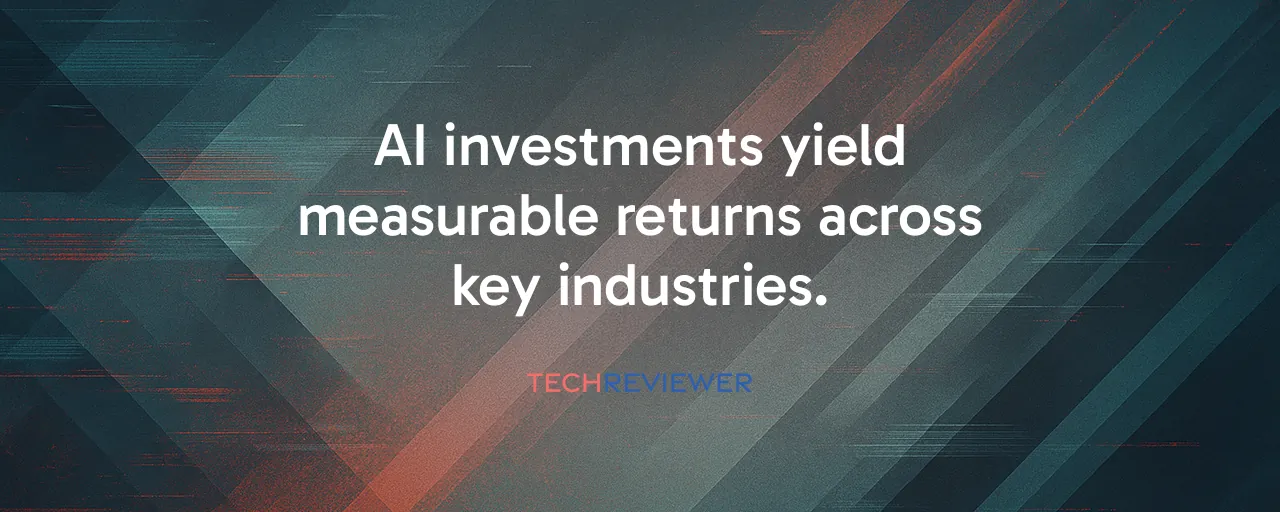AI's Big Bet: Substance Over Speculation
Talk of an AI bubble has been swirling, with warnings from the Bank of England and IMF pointing to a potential market crash. Yet, a closer look reveals a different story. Companies like Meta, Microsoft, and Nvidia are pouring billions into AI, not out of blind optimism, but because the technology is delivering measurable results. From healthcare diagnostics to retail inventory systems, AI is solving real problems. Goldman Sachs notes that the Magnificent Seven tech giants trade at a median forward price-to-earnings ratio of 27 times, far below the sky-high valuations of the dot-com era. This suggests a grounded approach, not reckless hype.
What's driving this confidence? Tangible assets and outcomes. Data centers are springing up across the U.S., with Meta's 2,250-acre Hyperion facility in Louisiana as a prime example. These aren't just digital dreams; they're physical infrastructure with real-world impact. Meanwhile, enterprise adoption is surging. Microsoft reports that 85 percent of Fortune 500 companies are using AI solutions, with 74 percent of businesses seeing ROI that meets or exceeds expectations, according to Deloitte. The numbers paint a picture of a technology that's earning its keep.
Powering the Future: Energy Meets Innovation
AI's growth comes with a catch: it's ravenous for power. Data centers are projected to demand 123 gigawatts by 2035 in the U.S. alone, equivalent to the energy needs of millions of homes. This strain on the grid has sparked concerns, but companies like Base Power are stepping up. Founded by Zach Dell, Base Power raised $1 billion to deploy residential battery systems that ease grid pressure while providing backup power to homeowners. Their systems have already rolled out over 100 megawatt-hours of storage in just two years, showing how AI's energy demands are driving innovation.
Compare this with Meta's Hyperion project, which partners with a nuclear power plant to secure clean energy. These case studies highlight a key lesson: AI's infrastructure needs are pushing energy providers to rethink how power is generated and distributed. Unlike the dot-com era, where fiber-optic cables sat unused after the crash, today's investments are creating lasting assets. Base Power's batteries and Meta's data centers are solving immediate problems while building a foundation for future growth. Still, challenges remain, like the seven-year wait for grid connections in some regions, which could slow expansion if not addressed.
Enterprise Wins: Where AI Delivers
Businesses aren't just throwing money at AI; they're seeing results. JPMorgan Chase, for instance, runs over 450 AI use cases, from trading to client services, with plans to hit 1,000 by 2026. Their $17 billion tech budget underscores serious commitment, and they're not alone. Deloitte's surveys show 20 percent of companies achieve AI returns exceeding 30 percent, particularly in back-office automation. These aren't flashy marketing gimmicks but practical tools that save time and money. For example, generative AI boosts junior staff productivity by up to 30 percent, letting them focus on higher-value work.
Contrast this with the dot-com era, where companies chased user growth without clear revenue paths. Today's AI investments are backed by cash reserves, not debt, for major players like Amazon and Google. Even startups like Anthropic and xAI, which raised $13 billion and $5.3 billion respectively, are focusing on tangible applications. The catch is that implementation isn't easy. MIT's 2025 report found that 95 percent of generative AI pilots fail to impact profits, often due to data readiness or cultural resistance. Success hinges on execution, not just tech.
The Other Side: Risks Worth Watching
Not everyone's sold on AI's golden future. JPMorgan's Jamie Dimon warns of a market correction within two years, and the IMF flags risks from tech stock concentration, which makes up 40 percent of the S&P 500. These concerns aren't baseless. AI's energy demands raise environmental red flags, with some data centers relying on fossil fuels and emitting smog-producing chemicals. Regulatory hurdles also loom, from GDPR compliance to unsettled questions about AI liability in high-stakes decisions like medical diagnostics.
Then there's the implementation gap. Many companies struggle to move from pilots to production, with data integration and talent shortages slowing progress. Yet, these challenges don't negate AI's potential; they highlight the need for smarter execution. Specialized vendors, for instance, achieve 67 percent success rates compared to 33 percent for internal builds. The lesson? Focus on targeted applications and robust infrastructure. While risks exist, the evidence suggests AI's value is real, not a replay of past bubbles.
What's Next: Building a Sustainable Path
AI's trajectory isn't about blind spending but strategic investment. The $192.7 billion poured into AI startups in 2025 reflects confidence in practical applications, from healthcare diagnostics to financial fraud detection. By 2030, global AI spending could hit $4 trillion, driven by infrastructure and enterprise adoption. But sustainability is key. Innovations like Base Power's distributed storage and Meta's nuclear-powered data centers show how companies are tackling energy challenges head-on.
The bigger picture is clear: AI is reshaping industries, much like electricity did a century ago. Workforce changes are coming, with JPMorgan's Dimon predicting a 3.5-day workweek through productivity gains. To get there, companies must navigate regulatory, environmental, and technical hurdles. The dot-com crash taught us that transformative tech survives market corrections. Today's AI investments, grounded in real assets and measurable outcomes, suggest a future where value outlasts the hype.
